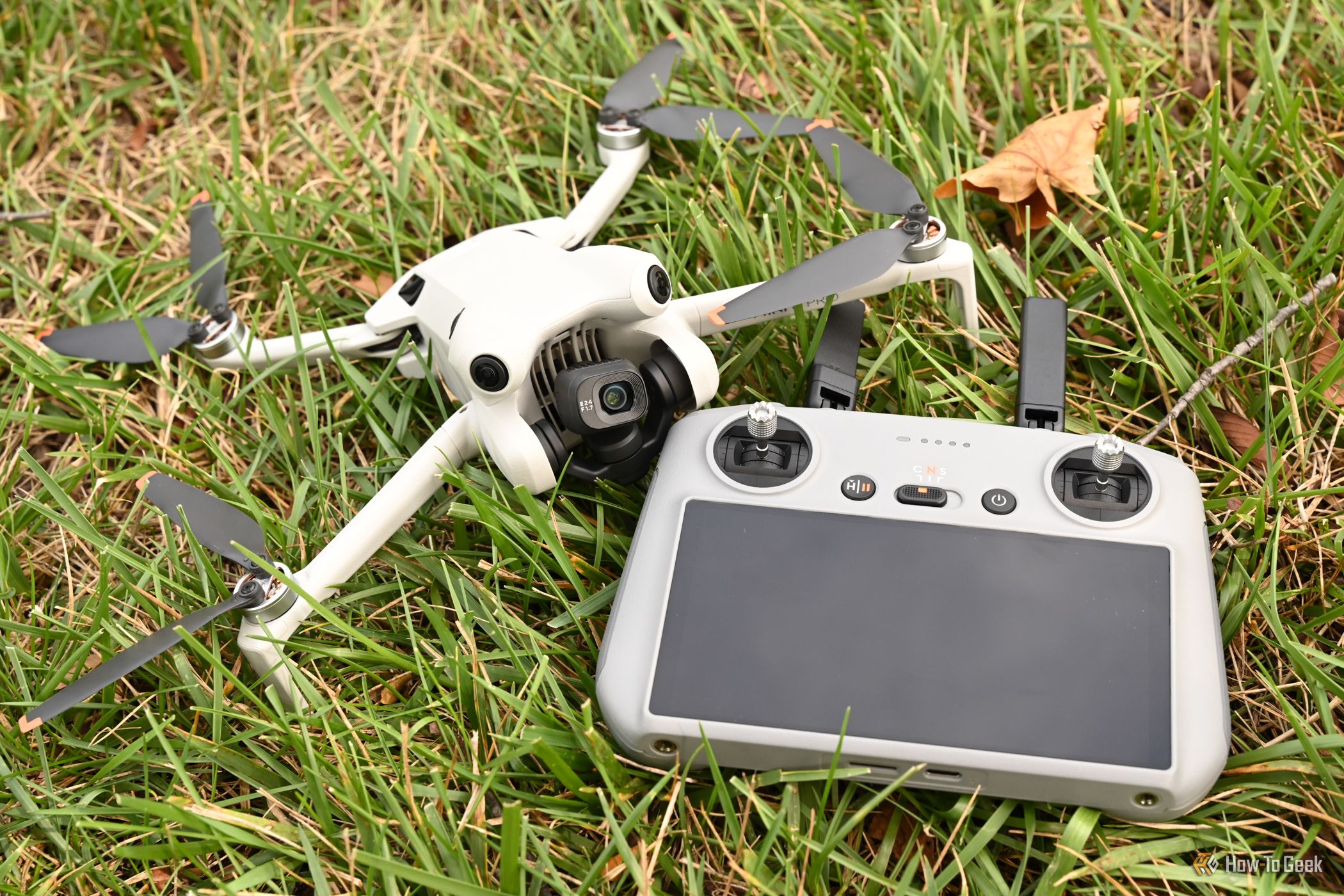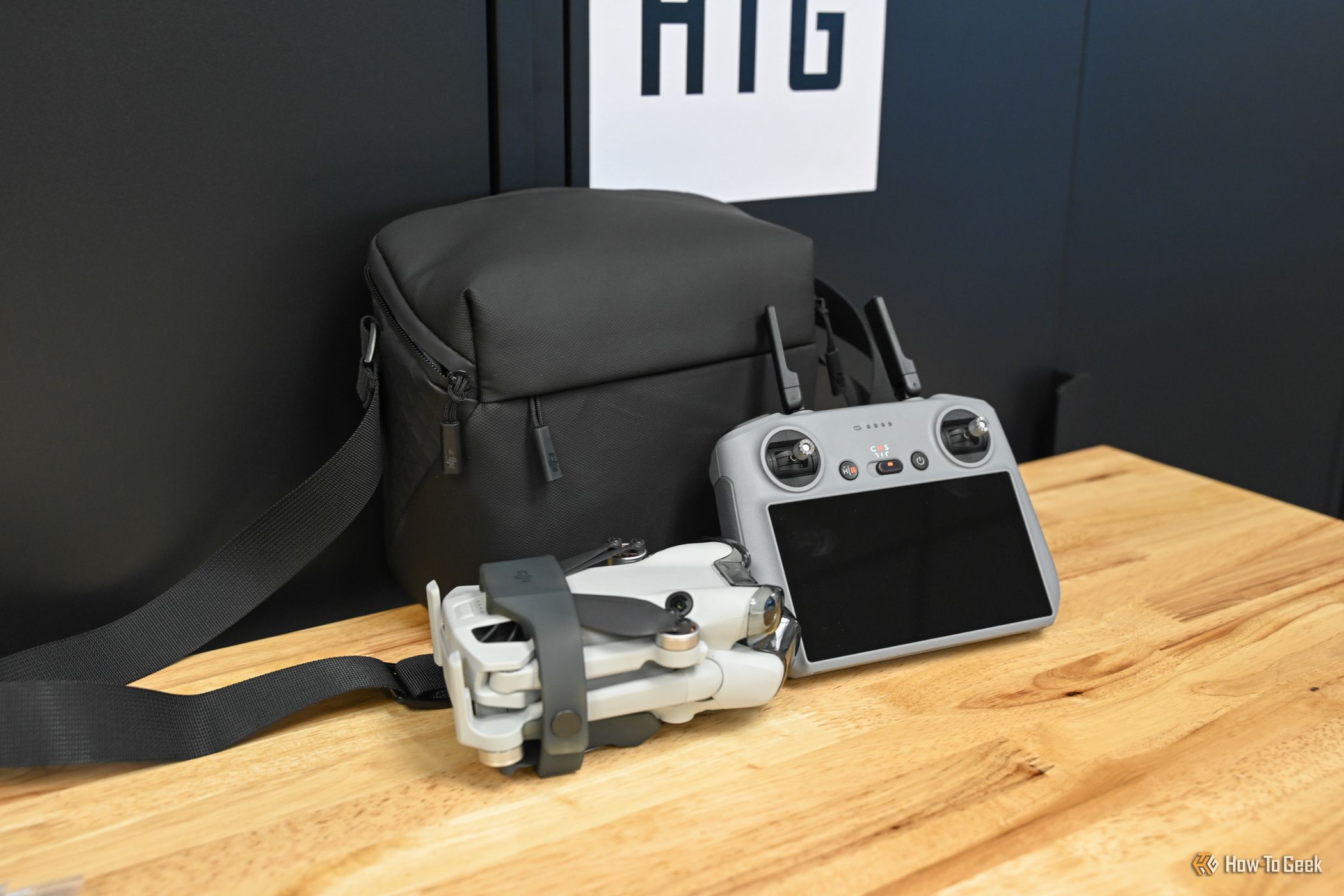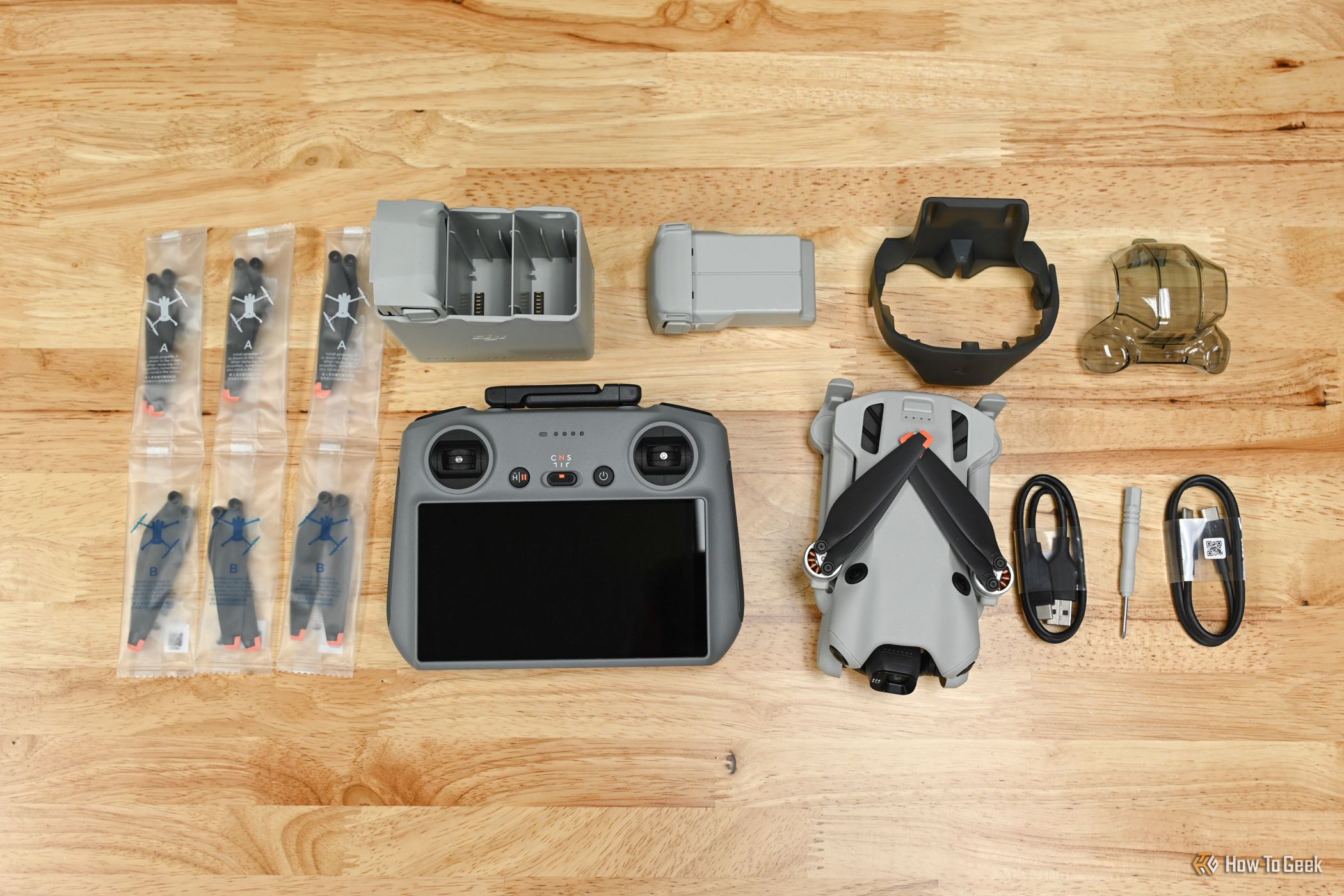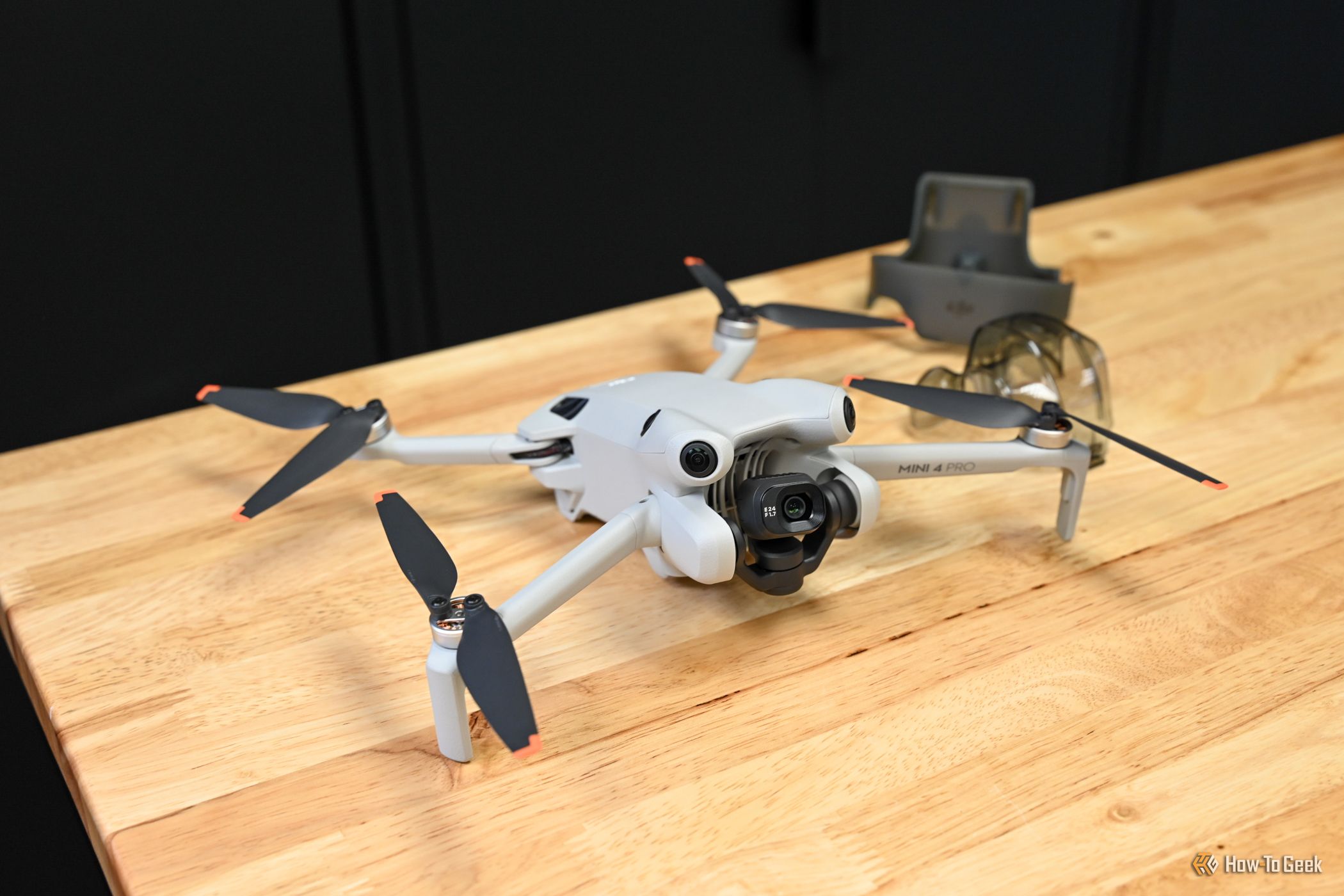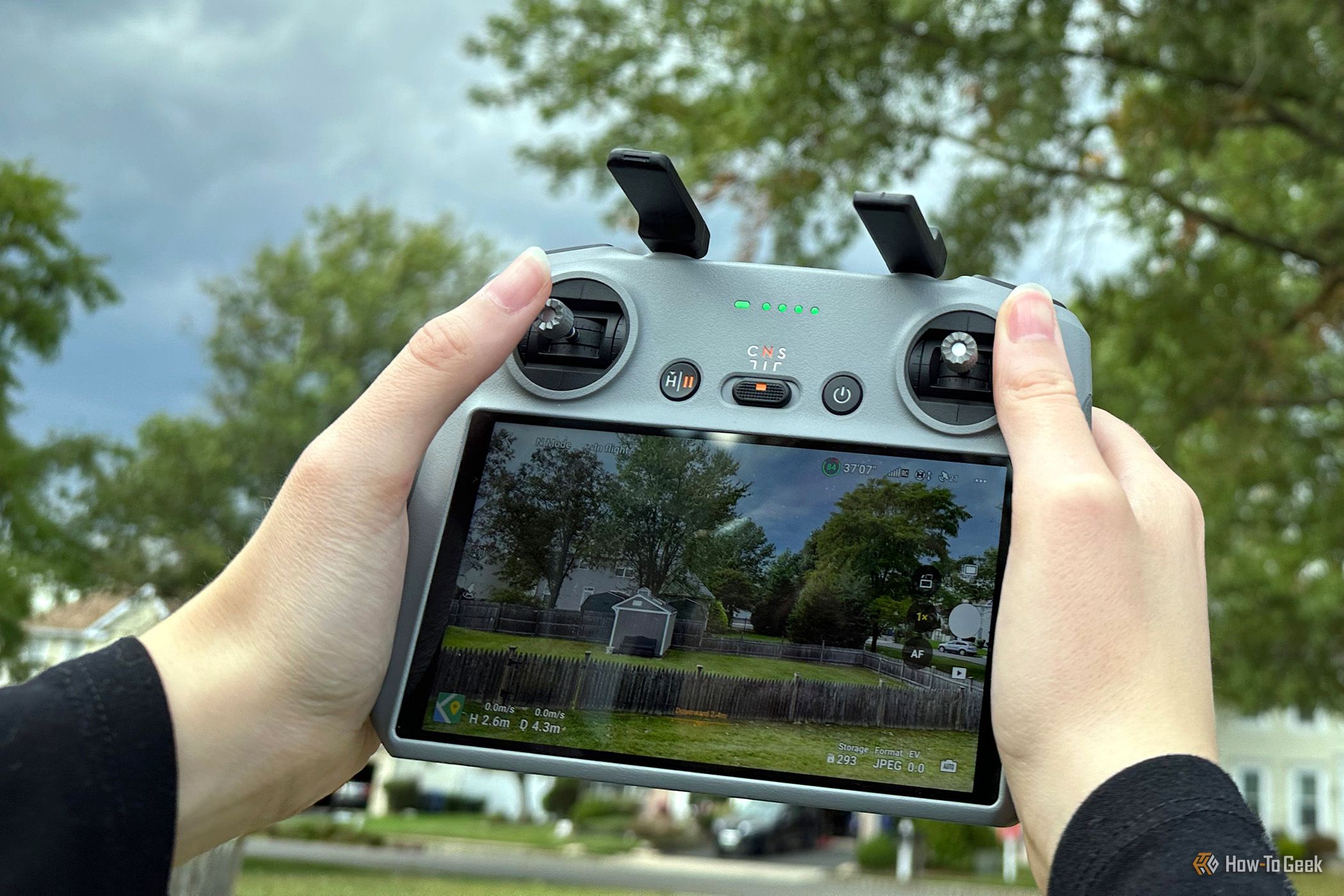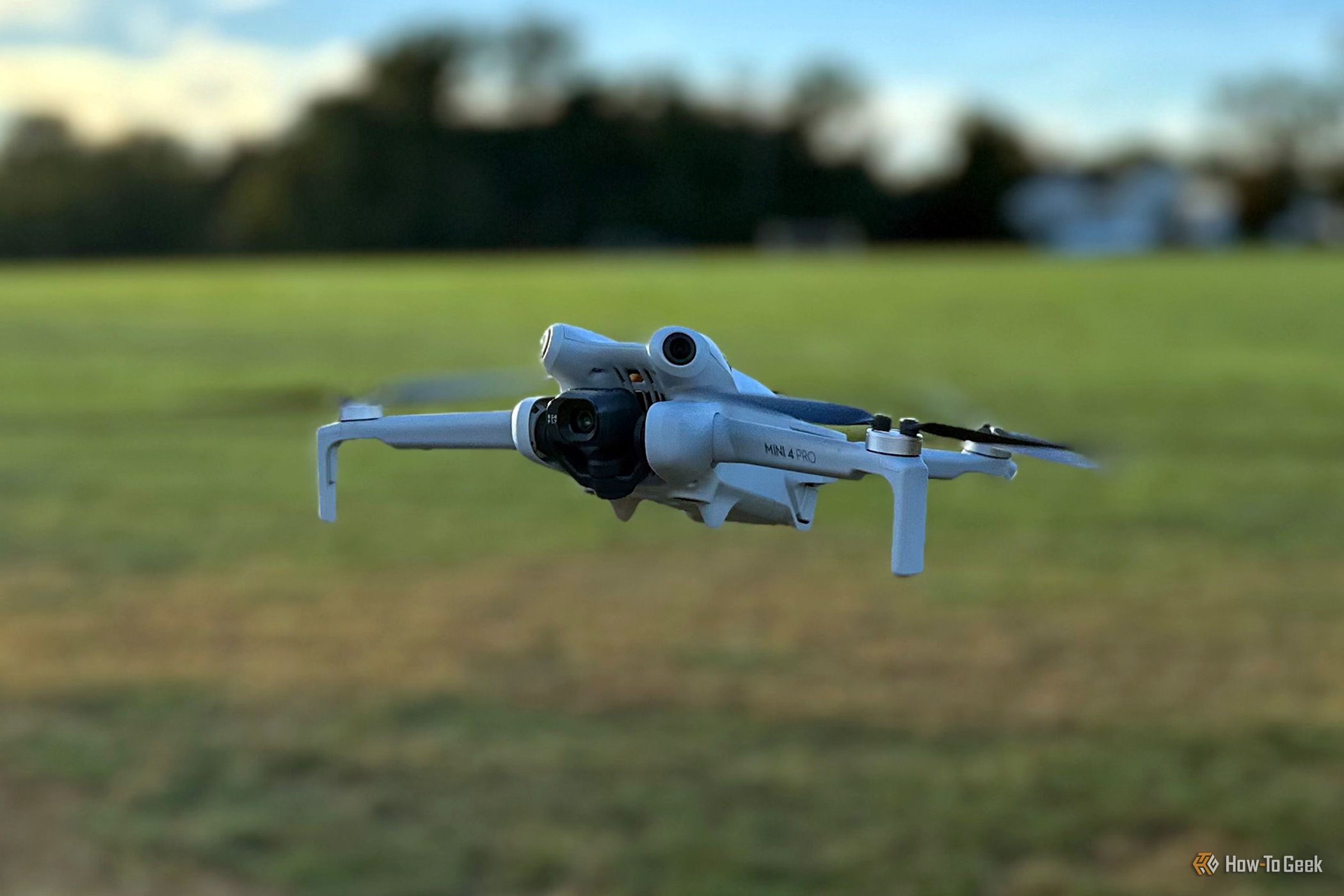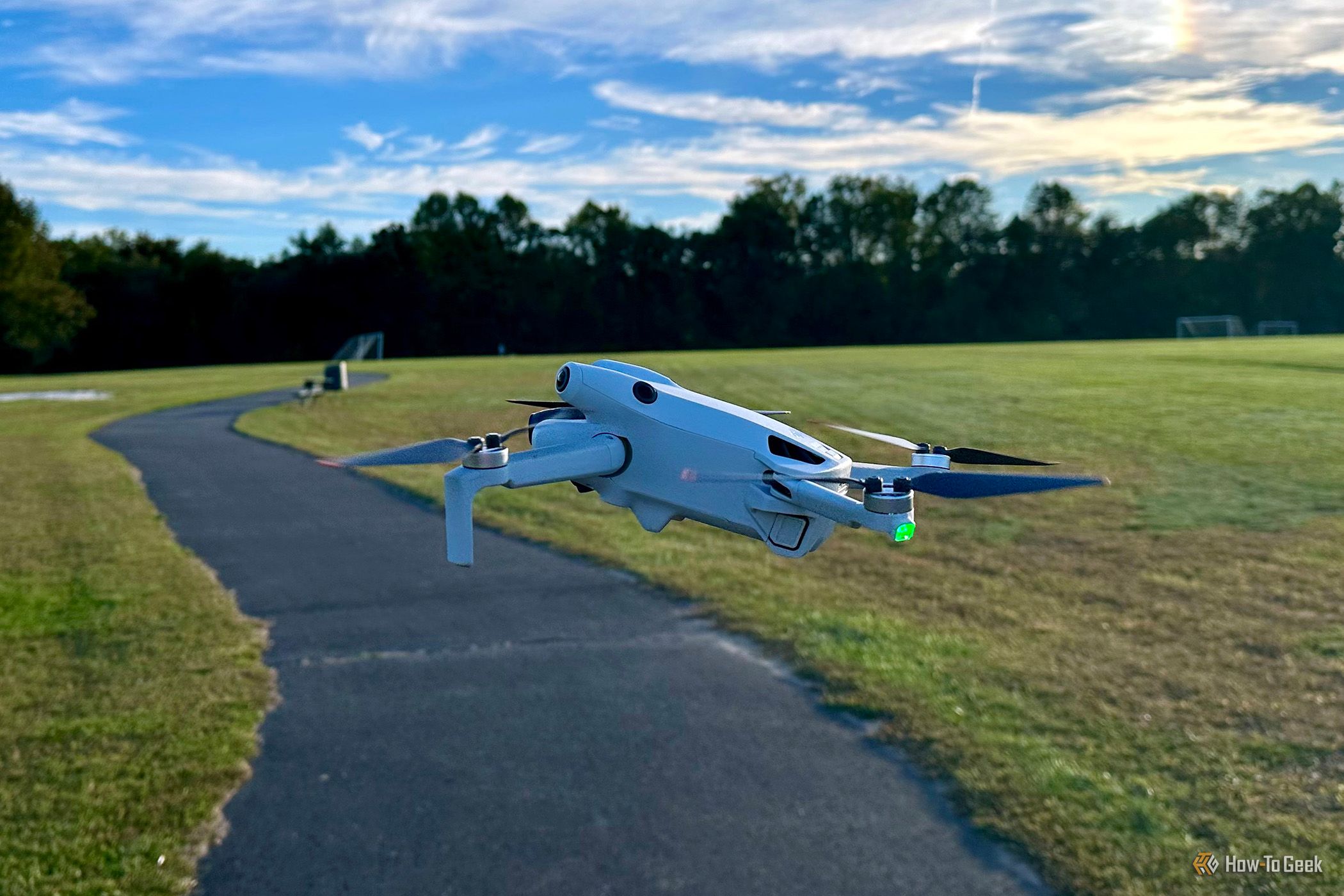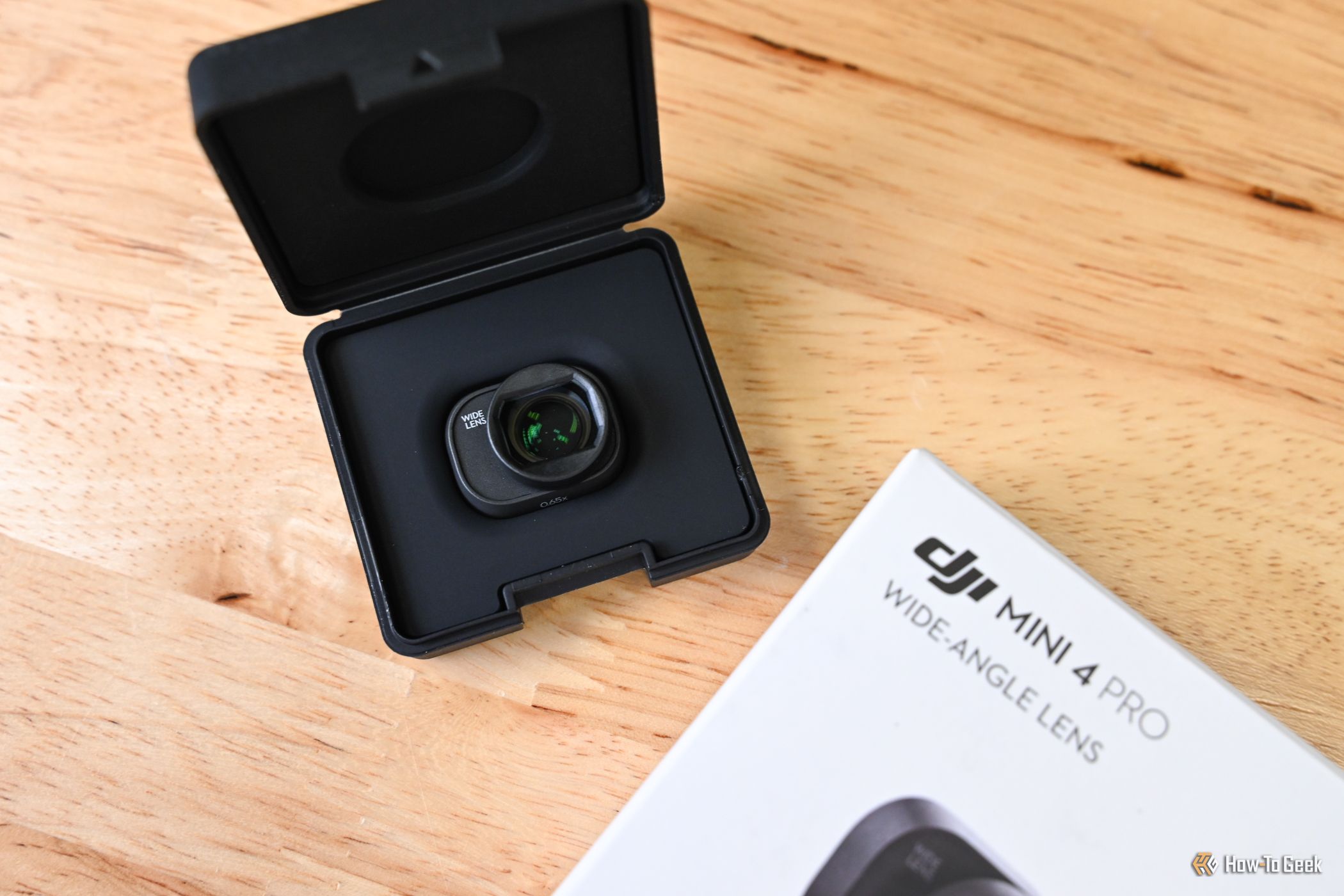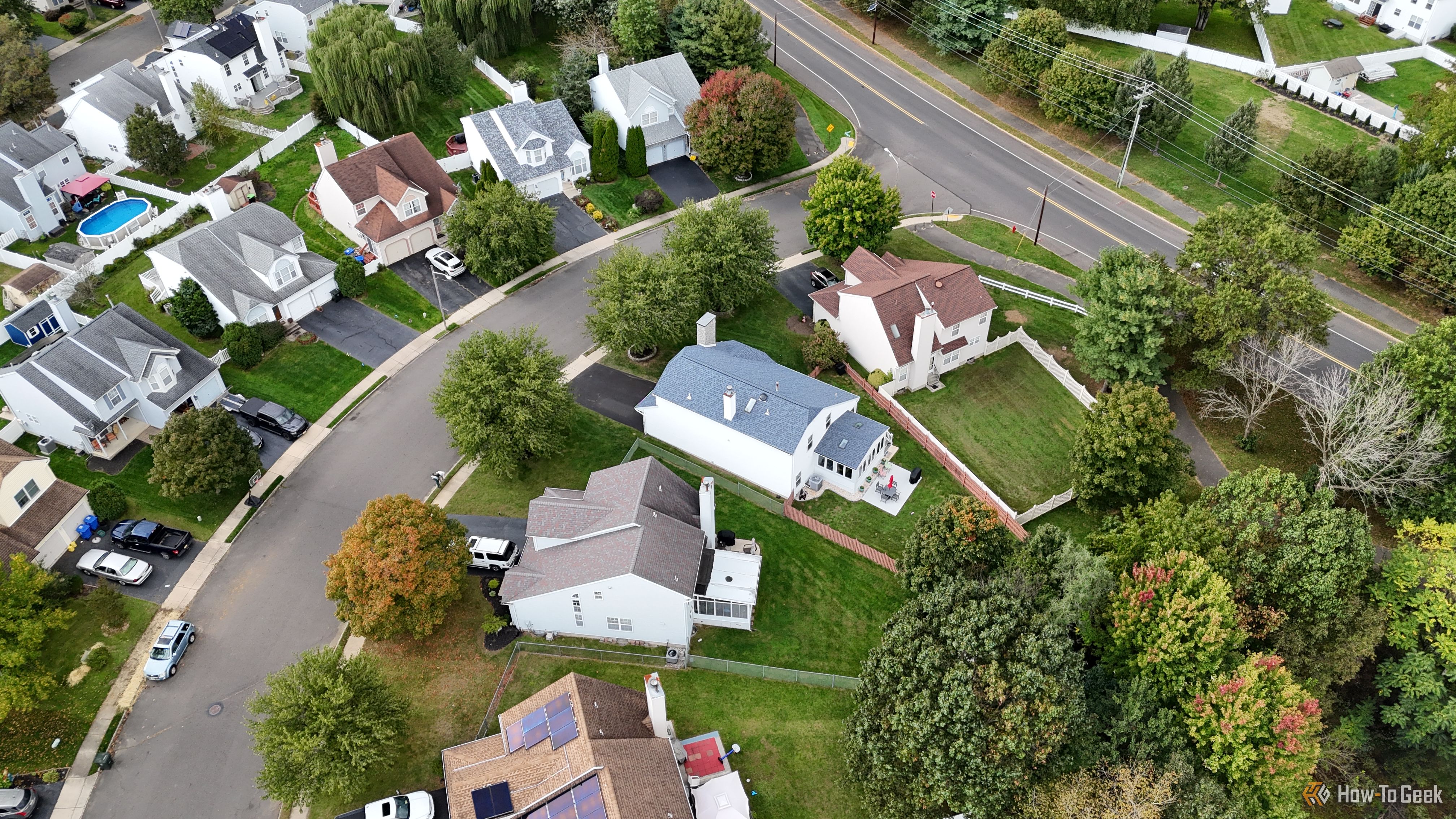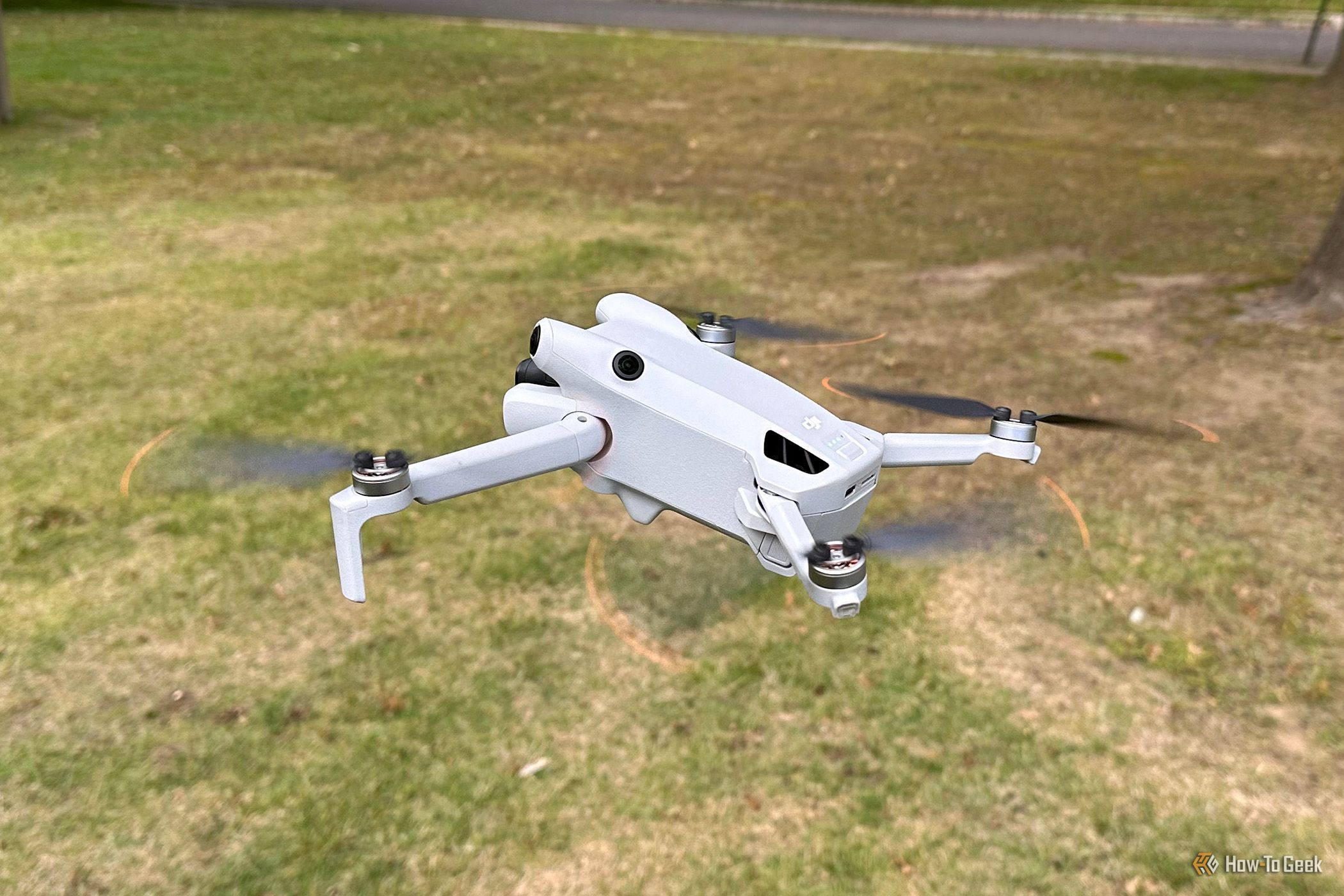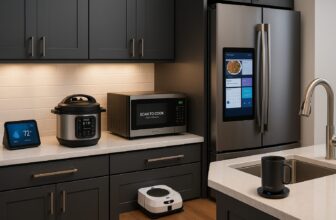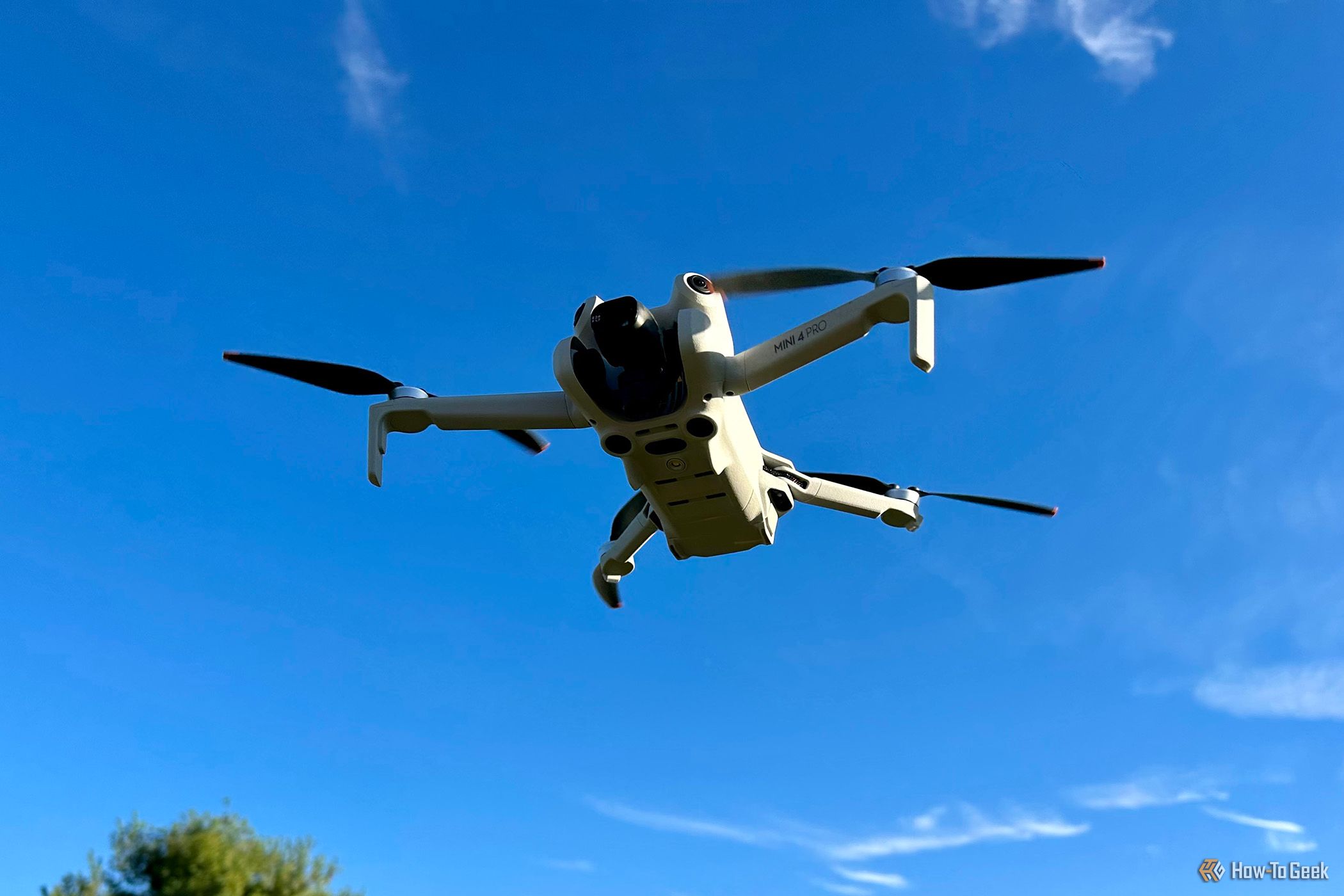
Key Takeaways
- The DJI Mini 4 Pro is a compact and lightweight drone that doesn’t compromise on pro features, such as obstacle sensing and 4K 60fps video quality.
- With its small size and weight, the Mini 4 Pro is easy to take anywhere and is beginner-friendly, making it a great option for those new to drones.
- The drone comes in various configurations, with the Fly More Combo Plus offering additional flight time batteries and a shoulder bag for added convenience.
The DJI Mini 3 Pro, released in May 2022, is one of the most beloved mini, or compact, drones on the market. It’s lauded for its lightweight, usability, and video quality. Now, DJI is back with the Mini 4 Pro, promising improvements in flight performance, camera quality, flight time, and beginner-friendly features like Intelligent Flight Modes.
DJI claims it’s their best drone for beginners, and the Mini 4 Pro’s competitive price point makes it an approachable purchase. But can the biggest name in the industry really make a compact beginner-friendly drone that both exceeds its well-regarded predecessor and lives up to its Pro designation?
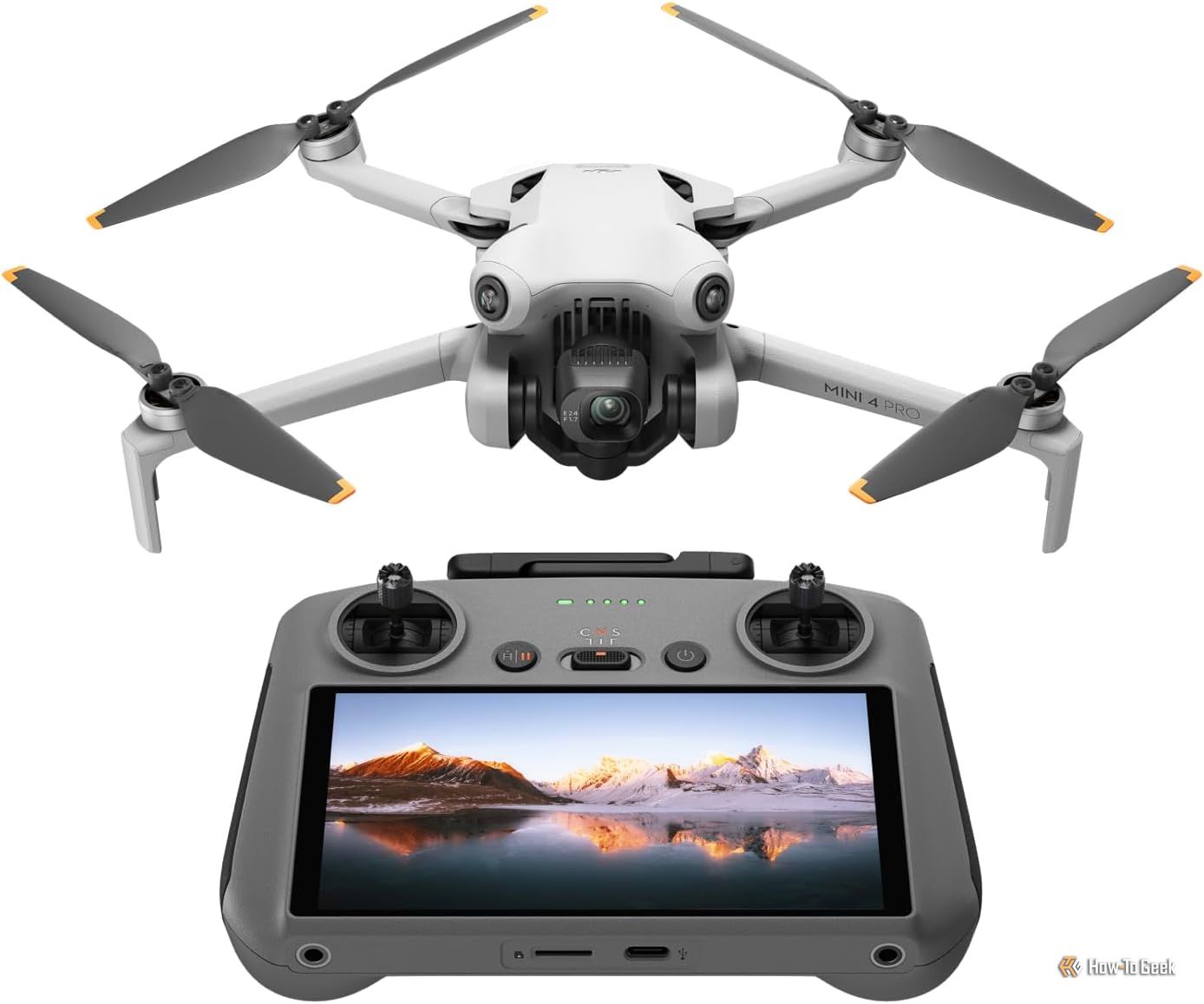

DJI Mini 4 Pro
The DJI Mini 4 Pro does just about everything you would want out of a drone in an incredibly compact, convenient, and highly functional package. The ease-of-use and image quality are best in class.
- Brand
- DJI
- Camera
- 1/1.3-inch CMOS, 48 MP
- App
- DJI Fly
- Speed
- 16 m/s (S Mode)
- Weight
- < 249 g
- Range
- 34 – 45 minutes
- Dimensions
- Unfolded (with propellers): 298×373×101mm (L×W×H)
- Video Resolution
- FHD, 4K
- Video Formats
- MP4 (MPEG-4 AVC/H.264, HEVC/H.265)
- Compact, yet sturdy
- Excellent image quality
- Good range and battery life
- Easy-to-setup and use
- Extended battery weight requires FAA registration
Design and Features: Size Matters
I’m the ideal target for a drone like the DJI Mini 4 Pro. I’ve dabbled in both toy and premium drones like the HEQ Swan Voyager with FPV Goggles, but I’d hardly consider myself an expert. One thing that has stopped me from using the Swan Voyager more, for instance, is that it’s really large and has a lot to set up. The cheap, more toy-like drones are almost too simple. They’re unable to avoid obstacles on their own and have limited range, among several other limitations. It’s also good that they’re relatively cheap because they’re easy to lose.
That’s why something like the DJI Mini 4 Pro is so compelling. It’s a compact package that actually lends itself to being taken pretty much anywhere, but doesn’t skimp on pro features like omnidirectional obstacle sensing, ActiveTrack 360 degrees, for hassle-free recording regardless of how the drone is oriented, and full 4K 60fps video quality.
The DJI Mini 4 Pro impresses with its size and weight. With its propellers folded, it measures about 5.86 inches long and 3.66 inches wide. With the extended battery, it weighs just 303.5 grams. Of course, the FAA and certain states require drones with a takeoff weight of 250g or greater to be registered. It’s a simple process, but something to keep in mind when using the extended battery versus the standard battery, which has less flight time, but keeps the drone under the 250g threshold.
The DJI Mini 4 Pro, RC 2 remote controller, and all of its accessories fit in the compact storage bag.
There’s a stabilized 3-axis gimbal and single 1/1.3-inch sensor camera able to shoot 4K 60FPS HDR video, 4K 100FPS slow motion video, and 48MP photos. The wide-angle camera also allows for true vertical shooting.
Using DJI’s OcuSync 4 (O4) video transmission technology, there’s a responsive 1080p/60FPS live video feed at a range of up to 20km (12 miles). Of course, environmental conditions can dramatically affect the signal strength and range, but it’s still impressive for this category of drone and a notable improvement over its predecessor’s roughly 12km (7 miles) maximum range.
The DJI Mini 4 Pro is available in various configurations starting at $759 (DJI RC-N2), which includes the drone, RC-N2 remote controller (without a display), and one 34-minute flight time battery. The next step up is the DJI RC 2 at $959, which replaces the RC-N2 with the screen-based RC 2 remote controller.
The DJI Mini 4 Pro Fly More Combo Plus (DJI RC 2). The storage bag is not shown.
The bundle I reviewed is the DJI Mini 4 Pro Fly More Combo Plus (DJI RC 2), which included the RC 2 remote controller, three flight time batteries, a two-way charging hub, and a shoulder bag for $1,159. The “Plus” stands for the inclusion of three 45-minute flight time batteries versus the $1099 non-Plus package’s 34-minute batteries.
The padded shoulder bag is only about 9 inches wide, 4.75 inches deep, and 6.75 inches tall. Every item included in the package, including the drone, RC 2, three batteries, charging station, three sets of replacement propellers, USB-C to USB-C cable, USB-C to USB-A cable, and a mini screwdriver easily fit in the bag.
The three batteries can be charged in the charging station, with one battery charged at a time, in succession, until the indicator lights are full. A 30W PD fast charger, not included, is recommended, but any standard USB power source works, though may charge slower. The charging station has a USB-C input and a USB-A output, as well as a power button that lets you check the status of any inserted battery.
When a battery is inserted in the drone, it can be charged via its own USB-C port, with the same type of indicator lights and power button found on the charging station. The RC 2 remote controller charges and works the same and has up to three hours of battery life.
Setting Up: Beginner Friendly
Fortunately, not a lot is needed to get started. Once the RC 2 remote and at least one battery are fully charged, it’s a simple matter of removing the propeller holder and gimbal protector from the drone. From there, unfold the rear arms, front arms, and propeller blades. Once the drone is prepped, remove the control sticks from RC 2’s storage slots and screw them into the controller. Finally, unfold the controller’s antennas.
The RC 2 needs to be activated before first use via an available Wi-Fi connection. Pressing, then pressing and holding the power button, begins the guided activation process on the 5.5-inch touchscreen.
Once activated and the controller is bound to the drone, you’re ready to fly, save for any firmware updates. After making sure everything was charged, I was ready to go from box to first flight in a breezy 30 minutes or so.
On the front of the drone is the gimbal and camera, as well as an omnidirectional vision system that can sense obstacles in horizontal directions and above. Underneath are the downward vision and 3D infrared sensing systems, as well as an auxiliary light. Towards the back of the drone are the battery level LEDs, Power button, USB-C port, microSD card slot, and battery buckles. Finally, just below the outside of the rear propellers are aircraft status indicators.
The RC 2 remote has two control sticks above the touchscreen on the front of the unit. The 1920 x 1280 pixel resolution touchscreen display is bright, vibrant, and responsive, and has good visibility even in direct sunlight. In-between the control sticks are the Flight Pause/Return to Home (RTH) button, Flight Mode switch (CineSmooth, Normal, and Sport), and the Power button. Above the Flight Mode Switch is the status LED and battery level LEDs.
At the top of the remote are the antennas, which are flanked by a video Record button and a Focus/Shutter button for taking photos, as well as speakers in the middle. Below those two buttons are a Gimbal dial that controls the tilt of the camera and a Camer Control dial for zoom control. At the bottom of the remote is a microSD card slot and USB-C port. Finally, directly behind the remote is storage for the control sticks and customizable C1 and C2 buttons. By default, C1 switches between recentering the gimbal and pointing it downward, while C2 switches between Landscape and Portrait modes.
As with the drone, I found the build quality of the RC 2 to be solid, ergonomic, and intuitively designed. Although the chance of a crash landing is low, I was never concerned that the drone wouldn’t hold up to the occasional accident nor the RC 2 to the occasional drop.
The Apps: Multiple Options
Three apps, which work with either iOS 11.0 or above, or Android 7.0 or above, devices, are recommended by DJI: DJI Fly, DJI Store, and LightCut.
DJI Fly, which already comes installed on the RC 2, provides a tutorial and other learning courses, lets you edit videos, and gives you access to the SkyPixel social media platform for sharing photos and videos. Even with the RC 2, it’s good to have access to some of the app’s features, like the learning courses, on your phone or tablet.
DJI Store provides shopping, a forum, after-sales support, tutorials, and, perhaps most useful, a Virtual Flight experience to safely train with a virtual version of the DJI Mini 4 Pro. It’s a great way to both try-before-you-buy and gamify learning the best way to manually control the drone.
Although not from DJI, LightCut is the video editing app the company recommends. It provides more advanced editing functions than those found in DJI Fly, including AI-based functions.
Flight Performance: Easy Does It
I tested the DJI Mini 4 Pro in New Jersey’s cool fall weather with no stability issues in both sunny and overcast conditions with light winds. Of course, you shouldn’t fly in snow, rain, or fog, and wind speeds need to be below 23 mph, but under most normal conditions the lightweight drone only exhibits minor vibrations.
Flight limits on height and distance are enabled by default, which provides considerable peace of mind when pushing the drone’s range. When the Geospatial Environment Online (GEO) System is enabled, real-time information on flight safety and restriction updates are received, which prevents the drone from flying in restricted airspace. Again, all great features that help even the newest drone user have a safe experience.
Basic flight involves Auto Takeoff, where the DJI Mini 4 Pro will hover approximately 4 feet above the ground, waiting for the next command. The two flight sticks are used to control the drone, with three available modes of operation depending on user preference. Even without first practicing with the flight simulator, I had no issues controlling the drone and camera with the default control scheme.
With just a tap, Auto Landing is engaged, with the drone automatically returning to its takeoff point. Although it’s sometimes a few inches to a foot or so off, it’s still an impressive feat, a fun watch, and provides further operational comfort when the drone is out of visual range.
The DJI Mini 4 Pro features an intelligent flight mode called FocusTrack. FocusTrack includes Spotlight, Point of Interest (POI), and ActiveTrack.
With Spotlight, you retain manual flight control, but the camera remains locked on the subject. POI has the drone track its subject in a circle based on the set radius and flight speed, up to 26 mph. ActiveTrack has the drone keep a specific distance and altitude from the tracked subject in either Trace or Parallel modes. Trace mode allows for eight types of tracking directions and follows relative to the direction of the subject’s movements, while Parallel tracks from a geographical orientation in relation to the subject. Each of these modes did a great job of keeping my target object in frame when I was manually maneuvering the drone.
The RC 2 remote controller can be switched between three Flight Modes: Normal, Sport, and CineSmooth (Cine). In Normal, the drone utilizes the Global Navigation Satellite System (GNSS), the omnidirectional vision system, the downward vision system, and the 3D infrared sensing system to locate itself and stabilize. Normal is recommended for most use cases and the mode I leaned on the most for taking much of the guesswork and stress out of my flight plan.
Sport Mode uses GNSS and the downward vision system for positioning, with the drone’s responses optimized for agility and speed, but disabling obstacle sensing. I only used this mode in wide open fields due to the risk of crashing into trees or other obstacles, but it’s a nice feature to have for the more adventurous who want to fly the drone acrobatically.
Cine is based on Normal Mode, but with a limited flight speed, making the drone more stable during filming. This mode created a more stable video image for me, relying on the gimbal less, but didn’t allow for as quick drone movements. It’s the type of mode that I can see those with professional use cases for the photos and videos leaning on the most.
As expected from any high-performance device with a battery, after even 10 minutes of flight, the drone does get warm to the touch. It’s the same for the RC 2 remote controller, although neither ever becomes uncomfortably hot.
Video Performance: A 4K Powerhouse
Taking video and photos is as simple as pressing the respective buttons on the RC 2 remote control. The RC 2 has a microSD card slot and 32GB of internal storage, of which 21GB is available. While the remote controller can do 720p screen recordings and photos, you’ll want to use the drone for direct footage captures at its native resolution.
The drone’s 2GB of internal storage is good for just a few minutes of 4K video and some photos, so you’ll want to make use of its microSD card slot. A 64GB or greater microSDXC card is recommended. I used a 256GB SanDisk microSDXC card that allowed for more than 5 hours of video recording space.
Related to Intelligent Flight Modes are several shooting modes: MasterShots, QuickShots, Hyperlapse, and Cruise Control. MasterShots keeps the subject at the center of the frame when executing different maneuvers in sequence to generate a short cinematic video.
QuickShots shooting modes include Dronie, Rocket, Circle, Helix, Boomerang, and Asteroids. Dronie flies the drone backward and ascends with the camera locked on the subject. Rock ascends the drone with the camera pointing downward. Circle flies the drone in a circle around the subject. Helix ascends and spirals the drone around the subject. Boomerang flies the drone around the subject in an oval path, ascending as it flies away from the starting point and descending as it flies back. Asteroid flies the drone backward and upward, taking several photos before flying back to the starting point. The video generated starts with a panorama at the highest position and then shows the view from the aircraft as it descends.
Hyperlapse shooting modes, where the drone flies slowly and takes a series of images, include Free, Circle, Course Lock, and Waypoint. Free has the drone automatically take photos and generate a timelapse video. Circle has the drone automatically take photos while flying around the selected subject to generate a timelapse video. Course Lock lets you lock the flight direction and also optionally select the subject for the camera to point toward while taking timelapse photos. Waypoints has the drone take photos on a flight path on multiple waypoints, then generate a timelapse video.
Cruise Control enables the drone to lock the current control stick input of the remote controller and automatically fly at the speed corresponding to the current control stick input. Less manual intervention makes long-distance flights easier and minimizes image shake, allowing for smoother video captures.
DJI Mini 4 Pro ND Filters Set (ND16/64/256)
As with other DJI drones, the Mini 4 Pro has a wide range of replacement parts and accessories available. Two of note are the DJI Mini 4 Pro ND Filters Set (ND16/64/256) and DJI Mini 4 Pro Wide-Angle Lens. The ND Filters Set includes three different lens filters to adapt the camera to harsh lighting conditions, such as overly bright water or direct sunlight. While primarily useful for longer exposures, I did find these filters helpful when the sun shined at a difficult angle, causing lens reflections in my video.
DJI Mini 4 Pro Wide-Angle Lens
The Wide-Angle Lens expands the camera’s field of view from 81.5 degrees to 114 degrees when taking photos and from 75 degrees to 100 degrees when recording videos (16:9). It’s yet another tool that adds versatility to an already versatile camera system.
A photo from the DJI Mini 4 Pro.
Whatever the operating conditions or shooting mode, I found the image quality to be universally excellent. Both videos and photos were crisp and clear, with true-to-life color. Whether around my neighborhood or at various parks, getting a birds-eye view of the surroundings was incredibly entertaining.
Each shooting mode was similarly fun to experiment with, and, combined with good photo and video editing software, opened up a lot of creative possibilities. While this size drone with these types of capabilities would work great for professional use cases, such as capturing real estate listings or doing site surveys, it’s just as at home as a YouTube content creation or pure recreational device.
Should You Buy The DJI Mini 4 Pro?
While the price point is competitive, there are still no-name drones that replicate a lot of the same features for a much lower cost. As such, it’s critical that the Mini 4 Pro prioritize build quality, ease of setup, intuitive control, image quality, and support. In that regard, DJI has succeeded.
If you have any use case for a drone, even if it’s just the fun of flight and exploring your surroundings from above, it’s hard to go wrong with the DJI Mini 4 Pro. With its numerous flight and shooting modes, it seems like there’s always something new to experiment with, creating ongoing value. I know for me, it reignited my love of drones thanks to its easy setup and use, as well as stunning image quality. It’s a product with tons to explore, but one that never strays far from being as user-friendly and approachable as possible.
In just a little over a decade after the first consumer-ready drones hit the market, DJI has created what just may be the first such product truly ready for the mainstream. Regardless of your personal skill level, the DJI Mini 4 Pro does just about everything you would want out of a drone in an incredibly compact, convenient, and highly functional package.

DJI Mini 4 Pro
The DJI Mini 4 Pro does just about everything you would want out of a drone in an incredibly compact, convenient, and highly functional package. The ease-of-use and image quality are best in class.

